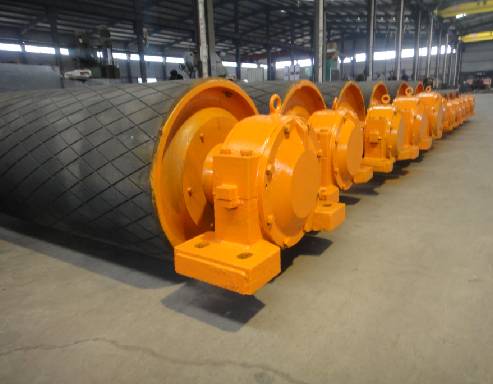 Afrikaans
Afrikaans  Albanian
Albanian  Amharic
Amharic  Arabic
Arabic  Armenian
Armenian  Azerbaijani
Azerbaijani  Basque
Basque  Belarusian
Belarusian  Bengali
Bengali  Bosnian
Bosnian  Bulgarian
Bulgarian  Catalan
Catalan  Cebuano
Cebuano  Corsican
Corsican  Croatian
Croatian  Czech
Czech  Danish
Danish  Dutch
Dutch  English
English  Esperanto
Esperanto  Estonian
Estonian  Finnish
Finnish  French
French  Frisian
Frisian  Galician
Galician  Georgian
Georgian  German
German  Greek
Greek  Gujarati
Gujarati  Haitian Creole
Haitian Creole  hausa
hausa  hawaiian
hawaiian  Hebrew
Hebrew  Hindi
Hindi  Miao
Miao  Hungarian
Hungarian  Icelandic
Icelandic  igbo
igbo  Indonesian
Indonesian  irish
irish  Italian
Italian  Japanese
Japanese  Javanese
Javanese  Kannada
Kannada  kazakh
kazakh  Khmer
Khmer  Rwandese
Rwandese  Korean
Korean  Kurdish
Kurdish  Kyrgyz
Kyrgyz  Lao
Lao  Latin
Latin  Latvian
Latvian  Lithuanian
Lithuanian  Luxembourgish
Luxembourgish  Macedonian
Macedonian  Malgashi
Malgashi  Malay
Malay  Malayalam
Malayalam  Maltese
Maltese  Maori
Maori  Marathi
Marathi  Mongolian
Mongolian  Myanmar
Myanmar  Nepali
Nepali  Norwegian
Norwegian  Norwegian
Norwegian  Occitan
Occitan  Pashto
Pashto  Persian
Persian  Polish
Polish  Portuguese
Portuguese  Punjabi
Punjabi  Romanian
Romanian  Russian
Russian  Samoan
Samoan  Scottish Gaelic
Scottish Gaelic  Serbian
Serbian  Sesotho
Sesotho  Shona
Shona  Sindhi
Sindhi  Sinhala
Sinhala  Slovak
Slovak  Slovenian
Slovenian  Somali
Somali  Spanish
Spanish  Sundanese
Sundanese  Swahili
Swahili  Swedish
Swedish  Tagalog
Tagalog  Tajik
Tajik  Tamil
Tamil  Tatar
Tatar  Telugu
Telugu  Thai
Thai  Turkish
Turkish  Turkmen
Turkmen  Ukrainian
Ukrainian  Urdu
Urdu  Uighur
Uighur  Uzbek
Uzbek  Vietnamese
Vietnamese  Welsh
Welsh  Bantu
Bantu  Yiddish
Yiddish  Yoruba
Yoruba  Zulu
Zulu Effective Solutions for Conveyor Belt Cleaning and Maintenance Techniques
Understanding Conveyor Belt Scrapers Essential Components for Efficient Material Handling
In today’s industries, efficient material handling is crucial for optimizing productivity and reducing operational costs. One of the unsung heroes of this process is the conveyor belt scraper. This device plays a vital role in maintaining the functionality and longevity of conveyor systems by ensuring that belts remain clean and operational.
What is a Conveyor Belt Scraper?
A conveyor belt scraper is a device designed to remove unwanted materials, such as dirt, debris, and accumulated bulk materials, from the surface of a conveyor belt. These scrapers are typically positioned at critical points along the conveyor system, such as at the discharge points, to effectively manage material carryback—excess materials that escape from the conveyor during operation.
Importance of Conveyor Belt Scrapers
1. Operational Efficiency Conveyor belt scrapers play a crucial role in maintaining the cleanliness of the conveyor system. By effectively removing carryback, they help ensure that the conveyor operates smoothly without interruptions. This reduces the need for frequent cleaning and maintenance, allowing for uninterrupted processing of materials.
2. Cost Savings By minimizing carryback, scrapers reduce material waste, leading to significant cost savings in both raw materials and operating expenses. Additionally, maintaining a clean conveyor system prevents wear and tear on the belt and machinery, extending the lifespan of both.
3. Safety Accumulated material can create safety hazards in the workplace, leading to slips, trips, and falls. A clean working environment is crucial for ensuring employee safety and adhering to regulations. Conveyor belt scrapers help mitigate these risks by keeping the work area tidy.
4. Environmental Impact Waste materials that are allowed to accumulate can become environmental hazards. Conveyor belt scrapers help capture and manage these materials, reducing their impact on the environment and supporting sustainability efforts within the industry.
Types of Conveyor Belt Scrapers
There are various types of conveyor belt scrapers, each designed for specific applications and materials
conveyor belt scraper

1. Primary Scrapers These are installed at the discharge point of the conveyor and are responsible for removing the majority of carryback from the belt. They typically have a robust design to handle tough and abrasive materials.
2. Secondary Scrapers Positioned after the primary scraper, secondary scrapers provide an additional level of cleaning. They are particularly useful for fine materials that may not have been entirely removed in the first stage.
3. Specialty Scrapers These scrapers are designed for specific applications, such as food-grade environments, where sanitation is paramount. They are made from materials that comply with health and safety regulations.
Maintenance Considerations
To ensure the effectiveness of conveyor belt scrapers, regular maintenance is essential. This includes
- Inspection Periodic checks for wear and tear on the scraper blades and other components should be conducted to ensure they are functioning optimally.
- Adjustment Proper positioning of the scraper against the belt is crucial. Regular adjustments may be necessary to maintain effective contact and cleaning capability.
- Replacement Over time, the scraper blades will wear down and require replacement. Using high-quality materials and appropriate design for the application can prolong the life of the scrapers.
Conclusion
Conveyor belt scrapers are vital components of material handling systems in various industries. They significantly contribute to operational efficiency, cost savings, safety, and environmental sustainability. Understanding their function and ensuring their proper maintenance can greatly enhance the performance of a conveyor system. For businesses looking to optimize their material handling processes, investing in high-quality conveyor belt scrapers is a step in the right direction. A proactive approach to managing conveyor hygiene not only supports operational goals but also prepares businesses for future challenges in efficiency and regulations.
-
Revolutionizing Conveyor Reliability with Advanced Rubber Lagging PulleysNewsJul.22,2025
-
Powering Precision and Durability with Expert Manufacturers of Conveyor ComponentsNewsJul.22,2025
-
Optimizing Conveyor Systems with Advanced Conveyor AccessoriesNewsJul.22,2025
-
Maximize Conveyor Efficiency with Quality Conveyor Idler PulleysNewsJul.22,2025
-
Future-Proof Your Conveyor System with High-Performance Polyurethane RollerNewsJul.22,2025
-
Driving Efficiency Forward with Quality Idlers and RollersNewsJul.22,2025





























